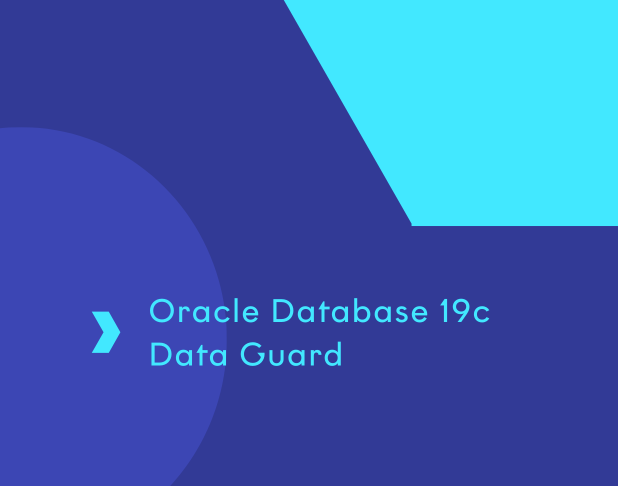This four-day course teaches you how to protect Oracle databases against planned and unplanned downtime, reducing risk and improving operational continuity. It’s an essential programme for technical professionals who want to build high-performing database environments using Oracle 12cR2, 18c or 19c.
Black Friday sale - up to 40% off training courses – use code: BLACKFRIDAY25USA
Oracle Database 19c Data Guard
Select your learning method

Build resilient database environments with Data Guard training
Learn how to maintain high availability and disaster recovery using Oracle’s Data Guard technology. You’ll build the knowledge and experience needed to plan, implement and manage a range of standby database configurations.
- Set up Oracle Data Guard systems
- Build and run standby environments
- Use the Data Guard Broker toolkit
- Monitor and fine-tune your setup
- Fix common Data Guard issues
- Manage database switchovers
- Handle backup and recovery with Oracle Recovery Manager (RMAN)
- Enable Flashback for recovery options
- Upgrade and patch systems safely
What you’ll learn
This course provides a comprehensive introduction to Oracle Data Guard. You’ll learn how its components work together and gain experience building and managing different types of standby databases. Develop the confidence to manage configurations effectively, resolve issues, use Broker tools, and streamline operations.
Backup, recovery and Flashback
You’ll learn how to keep your systems protected with solid backup and recovery strategies using Oracle Recovery Manager (RMAN). We’ll cover daily routines, how to restore across networks, and how to work with recovery catalogues. Also, learn how to use Flashback Database, a valuable feature that allows you to restore your environment to a previous state when recovery is needed. Whether you're handling outages or testing changes, you'll get the confidence to recover quickly and cleanly.
Tuning and transitions
Discover how to keep your standby databases running at their best. You’ll explore ways to optimise performance, configure redo transport, and manage SQL Apply. We’ll also look at switchover and failover, essential when you need to switch between primary and standby databases. By the end, you’ll feel comfortable carrying out transitions with minimal disruption to ensure your systems continue to run efficiently.
Quick setup and upgrades
Understand how to get Oracle Data Guard up and running quickly using guided setup tools. You’ll also learn how to carry out upgrades, including rolling upgrades using logical and physical standby databases, to help you keep systems up to date while minimising downtime. Whether you're setting up a new configuration or managing ongoing changes, you’ll gain the skills to maintain database performance and stability with minimal disruption.
4 days of instructor-led training in a live virtual classroom
Interactive hands-on live labs
All relevant course materials
Key facts
Database administrators and technical support professionals responsible for planning, implementing and managing Oracle Data Guard configurations.
Linux Introduction, Oracle Database 19c Administration or Oracle Database 19c Backup and Recovery with RMAN. An equivalent knowledge of Linux and Oracle database administration will also be accepted.
Our experienced trainers and interactive labs create a focused, practical environment – so you can put theory into practice from day one.
FAQs
This course gives you the skills and experience to confidently plan, build and manage Oracle Data Guard setups. You’ll learn to reduce downtime, maintain high availability, and remain in control when issues occur.
Will I learn how to switch between primary and standby databases?
Yes, absolutely. You’ll learn how to switch roles between your primary and standby databases, both for planned changes and unexpected outages. In our live labs, you’ll run through example scenarios, such as failovers and switchovers, to understand how tools like Flashback Database can help you recover quickly.
What types of standby databases can I create with Oracle Data Guard?
Oracle Data Guard supports three types of standby databases:
- Physical – An exact copy of the primary database which uses Redo Apply for synchronisation
- Logical – Read/write access only, these databases use SQL Apply to replicate changes
- Snapshot – A temporary, updatable copy of the primary database used for testing, which can later be converted back to a physical standby
What is the Oracle Data Guard Broker and how is it used?
The Oracle Data Guard Broker is a management tool that automates and simplifies the setup, monitoring and administration of Data Guard configurations. It provides both a command-line interface (DGMGRL) and integration with Oracle Enterprise Manager, allowing administrators to manage role transitions, validate configurations, and ensure synchronisation across environments — all from a centralised location.
What our customers say

"John made the subject matter interesting. The pacing was spot on, and he clearly knew what he was talking about and was able to communicate that easily. Very pleased and would highly recommend.”

“This is now my second course with John at ILX and once again the delivery was simply excellent. Best fun I've had at work for a while now and would very highly recommend the course. Hoping to come back for more in the future!”
Join the half a million learners developing their skills with our training
A trusted partner to thousands of organisations worldwide
Our passionate team goes above and beyond to support customer needs
Please complete the form to ensure your quote is accurate and we will contact you soon.